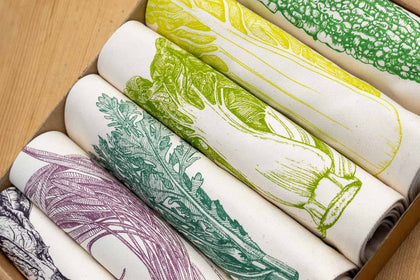
Kimchi Stew with Pork Belly - Kimchi Jjigae Recipe
by Su Scott
-
Easy

"Well-aged kimchi carries a depth of acidity that is often too sour to consume in its raw state, but is prized for its ability to cut through the fattiness of pork belly. Its pronounced, pungent flavour complements the richness of pork beautifully. The lacklustre texture of old kimchi is greatly improved by gentle saut.ing in a little oil with the addition of sugar that balances the sourness. Don’t be tempted to caramelize it too far, as when gochugaru burns, it tastes unpleasantly bitter: we’re here to soften, not to caramelize.
I don’t bother removing the pork skin as I don’t mind the gelatinous texture of skin in this stew; but feel free to remove it, if you wish. There are contrasting opinions on whether to brown the meat before adding it to the kimchi. I personally think the meat retains moisture better and is more tender when only briefly stirred in, simply combined with sautéed kimchi.
Kimchi jjigae should not be limp; instead it should have the vigour and tanginess that linger enough to make you salivate spoon after spoon. The final seasoning of the dish will greatly depend on the quality and ripeness of the kimchi you’re using. Try adding a touch of vinegar right at the end, to give the dish an uplifting sour note."
Read Su's exclusive Q&A with Sous Chef about the Korean food she loves.
Recipe taken from Rice Table by Su Scott (Quadrille, £27), Photography by Toby Scott.
Ingredients for Kimchi Jjigae
- 1 tbsp vegetable oil
- 1 tbsp toasted sesame oil
- ½ onion, thinly sliced
- 350g (12oz) overripe kimchi, roughly chopped
- 3 garlic cloves, minced
- 1 tsp golden granulated sugar
- 1 ½ tbsp gochugaru (Korean red pepper flakes)
- 300g (101/2oz) pork belly, cubed into bite-size pieces (skin removed, if desired)
- 1 tbsp mirin
- 1 litre (34fl oz/4 cups) water
- 2 tsp doenjang (Korean fermented bean paste)
- 1 tsp gochujang (Korean red chilli paste)
- 1 tsp shrimp paste
- 250g (9oz) firm tofu, cubed
- sea salt flakes, to season
- 1 tbsp brown rice vinegar (optional)
For the garnish
- 2 spring onions (scallions), thinly sliced
- ½ tsp toasted white sesame seeds, lightly crushed
How to make Kimchi Jjigae
- Heat both the vegetable and sesame oils in a large, lidded, heavy-based saucepan. Add the onion and saute over a medium heat for a few minutes to soften and start to colour a little, then turn down the heat a touch and add the kimchi, garlic, sugar and gochugaru. Cook gently for a good 10 minutes, stirring occasionally.
- It will start to smell very fragrant and the kimchi will appear softened and quite a bit darker in colour. Stir in the pork belly and mirin, then pour in the water. Stir in the doenjang, gochujang and shrimp paste. Crank up the heat to bring it to the boil. Once it starts to bubble, reduce the heat and simmer gently for 40 minutes with the lid on ajar.
- By now, the pork should be very tender and the broth rich and unctuous. Add the tofu. Check for seasoning and adjust it with a pinch more salt, if necessary.
- Continue to simmer with the lid on for 10 minutes until the tofu has softened to absorb the flavour. Taste and stir in the vinegar, if using, before removing from the heat. Divide the stew into four deep bowls.
- Top with spring onion and crushed sesame seeds. Serve immediately while steaming hot, with plain steamed rice.

About the author
Su Scott, a Korean-born freelance food writer based in London, won the Best Reader’s Recipe at the Observer Food Monthly Awards in October 2019. She has contributed recipes to publications like Waitrose Food, Sainsbury’s magazine, Olive magazine, and Waitrose Weekend newspaper.


